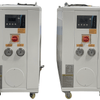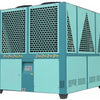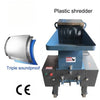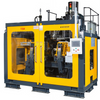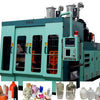Design and Industrial Application of 12-Liter Extrusion Blow Molding Machines Abstract
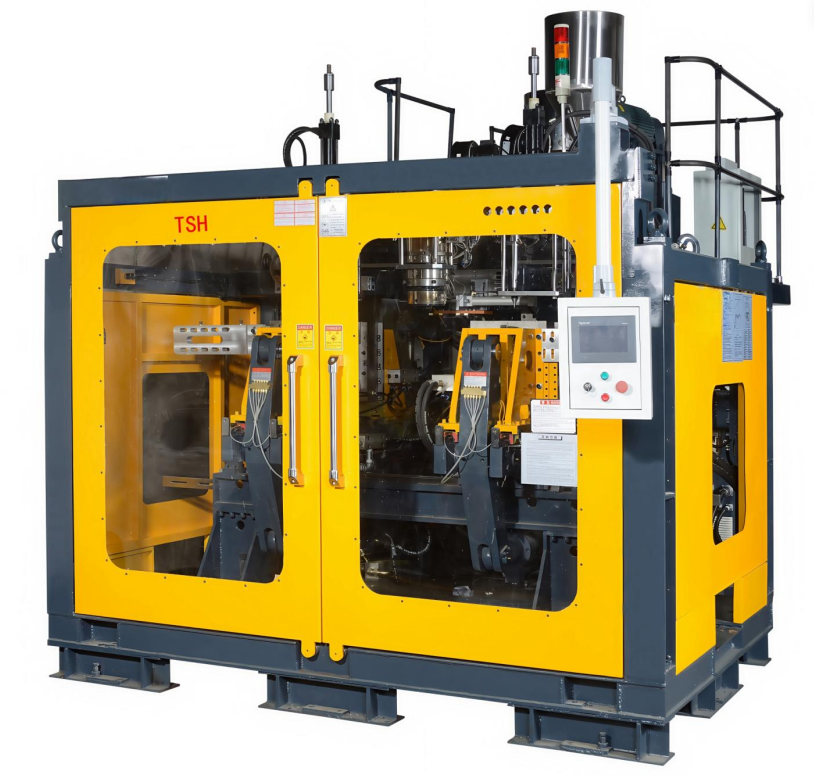
1. Introduction
The demand for robust, chemically resistant, and cost-effective large-volume containers has driven continuous innovation in extrusion blow molding. The 12-liter format is widely adopted across automotive, agricultural, and chemical sectors due to its optimal balance between handling ergonomics, transport efficiency, and product protection. Unlike smaller containers produced via injection or stretch blow molding, 12L bottles require high melt strength, precise wall-thickness control, and integrated structural features such as handles and reinforcement ribs—capabilities inherently supported by EBM technology.
Recent machine platforms, exemplified by the YJH90-12LⅡ, demonstrate how EBM systems have evolved to meet industrial-scale production demands while maintaining energy efficiency and operational flexibility.
2. Machine Architecture and Technical Specifications
The YJH90-12LⅡ (Yijiu Machinery, 2025) is a high-performance, dual-station extrusion blow molding machine engineered specifically for 12L containers [1]. Its core subsystems include:
-
Extrusion System:
- Screw diameter: 90 mm
- L/D ratio: 25:1
- Main motor power: 37 kW
- Heating zones: 4 zones, total heating power 8.8 kW
- HDPE output capacity: ~140 kg/h
-
Clamping and Mold System:
- Clamping force: 120 kN
- Mold opening stroke: 280–750 mm
- Template size: 570 × 540 mm
- Mold travel distance: 750 mm
- Double-toggle (crank-arm) clamping mechanism for high rigidity and alignment accuracy
-
Die Head and Parison Control:
- Continuous die head with 4 heating zones (3 kW total)
- Maximum die diameter: 200 mm
- Optional parison programming for wall-thickness optimization
- Supports liquid-level marking and multi-layer co-extrusion (with optional upgrades)
-
Blowing and Cooling System:
- Blowing pressure: 0.6 MPa
- Air consumption: 0.8 m³/min
- Cooling water pressure: 0.3 MPa, flow rate: 60 L/min
-
Control and Automation:
- PLC-based control system (Siemens or equivalent)
- Dual-station design: Enables simultaneous extrusion and blowing
- Cycle rate: 600 pcs/h per station, up to 1,200 bottles/hour total
- Optional integration with conveyors, leak testers, and automatic labeling
3. Production Performance and Efficiency
The YJH90-12LⅡ achieves high throughput with excellent repeatability:
- Daily output: ~10,000–28,000 units (depending on cooling time and material)
- Cycle time: ~3–5 seconds per station
- Weight consistency: ±1.5% for HDPE bottles
- Energy efficiency: Optimized heating zones and regenerative hydraulics reduce idle power consumption
- Labor reduction: Full automation minimizes manual intervention
The machine supports quick mold and die changes, enabling flexible production of containers from 1L to 12L on the same platform.
4. Material Compatibility and Applications
The primary material for 12L containers is HDPE, valued for its:
- High impact resistance
- Excellent chemical resistance
- Recyclability (compatible with rHDPE)
Typical industrial applications include:
- Automotive: Engine oil, transmission fluid, coolant bottles
- Agriculture: Urea solutions, liquid fertilizers, pesticides
- Chemical Industry: Industrial solvents, detergents, reagent drums
- Food Industry: Bulk edible oil (with food-grade PP/HDPE certification)
Optional features such as integrated handles, reinforced bases, and tamper-evident necks enhance functionality and safety.
5. Technological Trends and Sustainability
Recent advancements in 12L EBM include:
- Hybrid servo-hydraulic drives for energy savings (20–30% reduction vs. conventional hydraulics)
- AI-assisted parison control using real-time vision feedback
- Compatibility with 100% recycled HDPE (rHDPE)
- Digital production logs for traceability and carbon footprint tracking
Moreover, innovations like permanent magnet synchronous direct-drive motors—as reported in [3]—eliminate gearboxes and belts, improving efficiency and reducing maintenance in high-torque extrusion applications.
6. Conclusion
The 12-liter extrusion blow molding machine is a cornerstone of industrial packaging, combining scale, durability, and automation. Models like the YJH90-12LⅡ exemplify how modern EBM systems deliver high-speed, high-quality production while supporting sustainability and operational flexibility. As industries transition toward circular economy models and smart manufacturing, 12L EBM technology will remain essential for producing reliable, cost-effective, and environmentally responsible large-volume containers.
-
Posted in
extrusion blow molding machine

